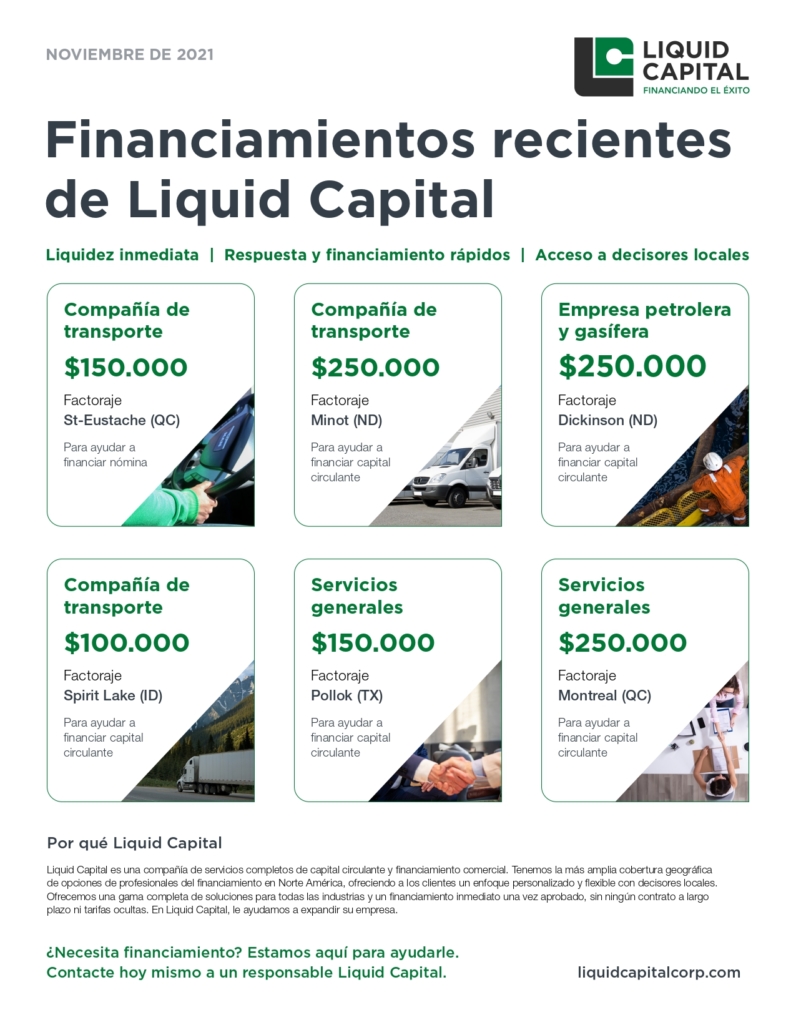Listado mensual: noviembre, 2021
5 ways beyond pay to support employees as they return to the workplace
/en Biz Tips, Sin categorizar/por Sarah SchoepferEncourage even the most reluctant employees to return to the workplace with these non-monetary compensation ideas.

Whether people are fully or partially returning to the workplace, company leaders and people managers are challenged to create a safe workplace that supports employees’ job performance and personal wellbeing.
Employees who have become accustomed to remote work may find the transition back to the physical office especially difficult. Using these top tips can help leaders motivate and encourage even the most hesitant employees to embrace their return.
1. Provide a flexible workplace
If there’s one thing the pandemic taught us, it’s that there’s more to life than work. Now, employees are looking for more than just money from their employers: nearly everyone wants flexibility.
Globally, the EY survey found that nine in 10 employees want flexibility in where and when they work. Nearly half (40%) would consider leaving their job post-pandemic if their employer did not afford some form of flexibility in where they worked. Considering a hybrid work model doesn’t require additional compensation and checks the box on “where” people work.
2. Abolish the 9 to 5
During lockdowns, many people re-evaluated their lives and defined new priorities, whether it was pursuing a long-forgotten passion or vowing never to miss another family dinner.
A flexible work schedule allow employees to work outside the conventional nine-to-five Monday to Friday workweek and create their own schedule to suit their needs. As long as productivity remains high and the output of work is consistently strong, this could be an attractive benefit for many employees.
3. Offer additional support to employees
If you’re looking to create a truly flexible work environment, consider providing benefits that support your employees, such as day care subsidies, transportation bursaries, cost of living bonuses and or shortened workweeks as some companies have done. These benefits will improve the culture across the entire organization, improving employee satisfaction and productivity to ultimately make your employees happier, more productive units of value within the company. Increased worker satisfaction will also lead to better customer experiences.
4. Reevaluate your sick leave policy
In pre-pandemic times, going into the office coughing and sneezing, box of tissues in hand, was a sign of bravery and loyalty. Now, the message is: if you’re sick, stay home. That gets complicated for hybrid and remote workers. Someone who is sick might still be able to do some work from home, while others might have to work from home while tending to a sick child, raising questions about what constitutes a sick day or leave.
Consider reevaluating your sick day and paid leave policies to account for the new work environment and your employees’ work/life circumstances.
5. Modernize your health benefits plan
In addition, look at your benefits plan to see if more support can be added in light of people’s current struggles. For example, many organizations have introduced or increased coverage for mental health services, physical activities (such as gym memberships or yoga classes) and feminine healthcare. Another important thing to ensure is the physical safety of your workers/employees in the workplace. If any employee gets injured while working, the employer should be responsible and considerate enough to provide adequate support to the employee by compensating and giving him the required time off to attend all the medical appointments, receive treatment and recover.
Putting People First
Ultimately, people are at the core of every successful business, and providing a supportive workplace makes all the difference.
At Liquid Capital, we’re dedicated to helping our clients with their financial needs, but we also care about their people. We’re business owners, too, so we understand the importance of employee happiness and wellbeing.
Want to increase your own mental health resilience? Discover these Positive mental health practices for entrepreneurs.
How to grow a business when you can’t get a bank loan
/en Sin categorizar, Business Growth/por Sarah SchoepferCan’t get a bank loan? You’re not alone, and you have more options when trying to fund your business growth.

Photo by Jopwell
Startup capital is the number one obstacle to starting a business and then growing it to new heights. Getting a bank loan is difficult without a proven business history that shows your creditworthiness—and draining your savings to start a business is a risky move.
If you can’t get a bank loan, there’s no reason to abandon your entrepreneurial dreams. Here are three strategies you can use to start a business and grow it with limited working capital.
Start a low-cost business
Some businesses require five figures to launch, but there are a lot of businesses you can start without a major investment.
- Online businesses are among the cheapest to start. Examples include selling virtual services, creating digital products or starting a no-inventory eCommerce business using dropshipping and print-on-demand services.
- If you prefer to keep it close to home, look to local services businesses like pet care, lawn care or cleaning services. Think about how you might scale those into bigger operations, and you could take a traditional small job and turn it into a bigger business operation!
- Freelancing businesses are another top choice for first-time entrepreneurs. You can start a freelance business on the side or full-time using online marketplaces to build your client roster.
Your choice of business entity affects the costs of starting a business. Corporations come with additional startup costs but could be the right choice for your structure. While sole proprietorships and LLCs are inexpensive to form, they also come with limitations, so it’s important to consider the pros, cons and get professional advice on the route to follow.

Photo by Pavel Danilyuk
Find business investors
What if you have lofty business dreams but lack the capital to make them a reality? When you have a great idea but no money to get it off the ground, turn to investors.
- Angel investors and venture capitalists are two major sources of equity funding for startups. This type of investor is often suited for high-growth startups with the potential for large returns.
- Startup accelerators help new business owners connect with investors. Some business accelerators provide capital directly to startups, sometimes in exchange for equity.
- Many small startups find success with crowdfunding. The best crowdfunding strategies offer equity or non-financial rewards in exchange for contributions.
Apply for alternative financing
Business loans aren’t the only way to finance your venture. These financing alternatives appeal to entrepreneurs who can’t get traditional business loans or bank funding.
In many cases, alternative financing can be leveraged alongside your traditional funding, and at Liquid Capital, we’re happy to work with your banker, traditional lender and other financial institution. Essentially, we become your funding team, which can supercharge your financing abilities.
- Peer-to-peer lending uses unsecured personal loans through P2P lending platforms to provide startup business capital. Because P2P lending isn’t FDIC-insured, it’s important to understand the risks.
- Equipment financing helps founders buy equipment without the barriers of traditional bank financing. Because the business equipment serves as collateral, you may not need credit history to qualify.
- Early-stage businesses can maximize growth using invoice factoring. Invoice factoring turns unpaid invoices into cash to free up working capital.
- When all else fails, bootstrapping is a proven way to build a business from the ground up. Instead of relying on outside funding, bootstrapping grows a startup slowly using its own funds.
Of course, we don’t want you to struggle to get funding, so give us a call and we can walk through all the options with you.
Scaling a business?
You don’t have to choose between draining your savings and giving up on your business goals. With the right strategy, you can start a business without putting your personal finances on the line. Use these resources to learn more about your startup financing options and discover your business’s path to success.
Up next:
- Learn the in’s and out’s of invoice factoring with The invoice factoring guidebook
- Get ready for alternative funding with our guide How to Become ‘Lender Friendly’
Returning to the office won’t be easy. How can leaders support employees?
/en Sin categorizar, Business Growth/por Sarah SchoepferAs employees begin returning to the office, there are some key considerations that leaders will want to address so their employees are supported.

Going back to the office and back to “normal” is a hot topic around the virtual water cooler these days. But as company leaders finalize their re-entry plans after more than 18 months of remote work, they face a cold new reality: The workplace as we knew it is no more.
Even though socially distanced employees miss engaging with co-workers in person, many are reluctant to return full time. Research from Leger found that 33% of Americans and 40% of Canadians want to work a hybrid model, meaning a mix of in-office and at-home work. In addition, about half of Americans (47%) and Canadians (50%) who want to return to their workplace wouldn’t be comfortable doing so if some of their colleagues aren’t vaccinated.
To help ensure successful re-entry, here are several ways to support your employees and teams when getting back to the office:
Physical health and safety is job number one
Even as public health measures surrounding the pandemic lift, you can take steps to reduce health risks (and any associated fear factor) in your workplace. Guidelines to help stop the spread of the virus include implementing a rapid testing and screening program, providing personal protective equipment, and working with a building operator or HVAC specialist to improve air exchange rates or filtration. In the McKinsey study, improved air filtration was a top request among employees, with 62% saying it could decrease the stress they experienced from returning to work.
Put yourself in employees’ shoes
Just as employees had to acclimate to a new way of working when the pandemic first hit, the return to office comes with its own set of adjustments and challenges. For example, in a recent McKinsey survey, one-third of respondents said the return to work has had a negative impact on their mental health. Among those who have not yet returned to their workplace, nearly half anticipate negative mental health impacts such as stress and anxiety.
Create policies
A vaccine policy might also help ease employees’ minds. A survey by EY found that 61% of employees want their company to require the vaccine before returning to physical workspaces. For employees’ part, encourage them to stay home when they’re sick, practice hand hygiene, clean and disinfect their workstations, and maintain physical distance from co-workers.
Create an environment of psychological safety
In addition to making sure your employees are physically safe, it’s important to prioritize psychological safety. Psychological safety refers to the feeling of being one’s whole self at work, and the belief that one can speak up with ideas, questions or concerns without fear of negative consequences.
A Workhuman survey of U.S. workers found that only 26% felt psychologically safe during the pandemic and experienced higher levels of burnout, stress and loneliness.
Some ways you can boost employees’ psychological safety are showing appreciation for their ideas, being an active listener, fostering a culture of openness, and creating a sense of belonging.
Consider pay transparency
Most employers don’t want their employees to compare paycheques, as it can result in animosity and resentment among their teams. However, the concept of pay transparency is gaining momentum, as it aims to close unfair pay gaps based on gender, race, age or disability. While this might not be for everyone, it could be something to consider for some organizations.
Pay transparency allows your company’s compensation figures (salary ranges or specific numbers) to be visible to other people, either internally, publicly, or both.
While pay transparency encourages equal pay, there’s more to it than monetary benefits. When done correctly, pay transparency can improve workplace culture, promote diversity, boost morale and improve employee engagement. Some pay transparency tips are:
- Review compensation models and resolve salary discrepancies
- Determine your company’s comfort level with pay transparency
- Train managers on how to successfully navigate salary discussions.
Once you’ve reviewed these considerations, you will want to create a clear and transparent return to the office plan. Sharing your plans with employees will help to reduce anxiety and uncertainty about what awaits everyone as they transition into the post-pandemic workplace — whether they return in-person full time or take a hybrid approach.
Up next: 7 ways to make strong business relationships that last
Tired of business cash advances and waiting 90 days for payment?
/en Sin categorizar, Business Growth/por Sarah SchoepferThinking of getting another business cash advance? Learn why invoice factoring might be better for you or your client.

Cash flow is vital for your business and impacts everything from payroll and lease payments to your next capital investment. But when it’s all tied up with your clients and their unpaid invoices, what can you do?
Many business owners turn to their bank for help, but can’t always get financing. Others may resort to merchant cash advances, but those temporary solutions could leave you in a worse position than when you started.
And what if your business is new and you don’t have the past business or credit history to even apply for the advance? You’re still stuck with outstanding invoices and no cash flow.
Related: Learn why you should choose invoice factoring over a cash advance
Unlock cash today with invoice factoring
Why not leverage your current client open invoices to get you access to cash through invoice factoring instead? After all, you’ve worked hard to earn that business, but unless the client is going to pay you early, you can only access it today through invoice factoring.
Invoice factoring can immediately unlock money that’s already yours, freeing your business from the regular net 30, 60 or 90-day payment cycle. You can use the money for payroll, operational costs, debt repayment, supplier invoices or anything else you want to pay off.
Your factoring partner keeps a small percentage of the invoice as a reserve, while you see the majority of that working capital right away.

If you’re in need of ongoing cash flow and want to eliminate the hassle of unpaid invoices, please get in touch. We can explain how invoice factoring works and uncover financing for your business that will unlock the money your business is already owed.
Free up your business cash flow today and breathe a little easier.
Get started with a helpful, no-obligation consultation. Find your nearest Liquid Capital Principal today.
Conéctese con nosotros
1-844-228-0800
Oficina Principal en Canadá
Liquid Capital Enterprises Corp.
5075 Yonge Street, Ste. 700
Toronto, ON M2N 6C6
Oficina Principal en los Estados Unidos
Liquid Capital Enterprises Corp.
921 West New Hope Drive,
Suite 702
Cedar Park, TX 78613-6786
Últimas publicaciones
 Get Off the Transaction Treadmill and Win Contracts with Invoice Factoringjunio 11, 2025 - 1:08 pm
Get Off the Transaction Treadmill and Win Contracts with Invoice Factoringjunio 11, 2025 - 1:08 pm Recent Fundings – May 2025junio 11, 2025 - 12:40 pm
Recent Fundings – May 2025junio 11, 2025 - 12:40 pm









